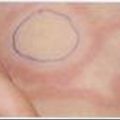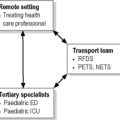13.3 Ocular trauma
Introduction
Trauma
Lid lacerations
Indications for emergency ophthalmologic consultation include:
American Academy of Pediatrics. Policy Statement. Eye Examination in Infants, Children, and Young Adults by Pediatricians. Pediatrics. 2003;111(4):902-907.
Babineau M.R., Sanchez L.D. Ophthalmologic procedures in the emergency department. Emerg Med Clin N Am. 2008;26:17-34.
Curryn K.M., Kaufman L.M. The eye examination in the pediatrician’s office. Pediatr Clin North Am. 2003;50(1):25-40.
Ehlers J.P., Shah C.P., editors. Wills Eye Manual: Office and Emergency Room Diagnosis and Treatment of Eye Disease, 5th ed. Baltimore: Lippincott Williams & Wilkins. 2008:12-48.
Danis R.P., Neely D., Plager D.A. Unique aspects of trauma in children. In: Kuhn F., Pieramici D.J., editors. Ocular Trauma: Principles and Practice. Stuttgart: Thieme; 2002:307-317. Chap 30.
Levine L.M. Pediatric ocular trauma and shaken infant syndrome. Pediatr Clin N Am. 2003:137-148.
NSW Health. Eye Emergency Manual, An Illustrated Guide. NSW Health; 2007.




